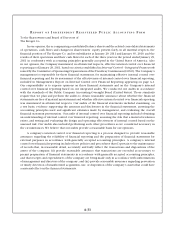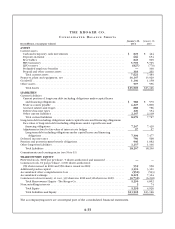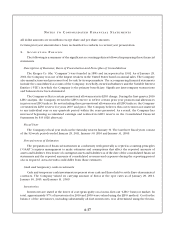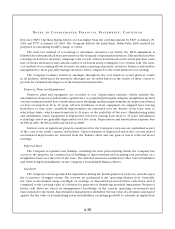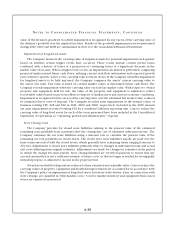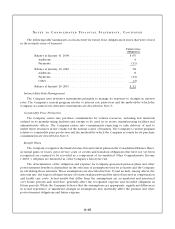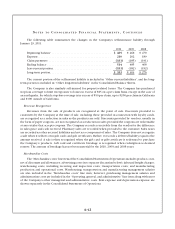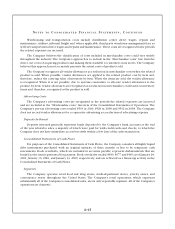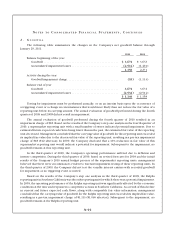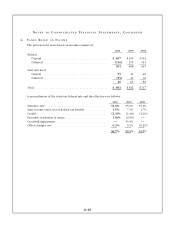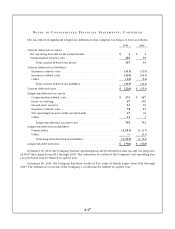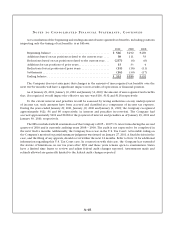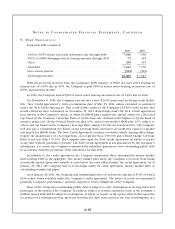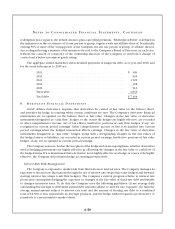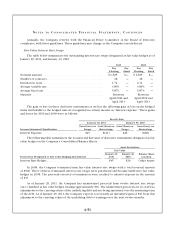Kroger 2010 Annual Report Download - page 121
Download and view the complete annual report
Please find page 121 of the 2010 Kroger annual report below. You can navigate through the pages in the report by either clicking on the pages listed below, or by using the keyword search tool below to find specific information within the annual report.
A-41
NO T E S T O CO N S O L I D A T E D FI N A N C I A L ST A T E M E N T S , CO N T I N U E D
The Company also participates in various multi-employer plans for substantially all union employees.
Pension expense for these plans is recognized as contributions are funded.
The Company administers and makes contributions to the employee 401(k) retirement savings accounts.
Contributions to the employee 401(k) retirement savings accounts are expensed when contributed. Refer
to Note 13 for additional information regarding the Company’s benefit plans.
Stock Based Compensation
The Company accounts for stock options under fair value recognition provisions. Under this method,
the Company recognizes compensation expense for all share-based payments granted. The Company
recognizes share-based compensation expense, net of an estimated forfeiture rate, over the requisite service
period of the award. In addition, the Company records expense for restricted stock awards in an amount
equal to the fair market value of the underlying stock on the grant date of the award, over the period the
awards lapse.
Deferred Income Taxes
Deferred income taxes are recorded to reflect the tax consequences of differences between the tax
basis of assets and liabilities and their financial reporting basis. Refer to Note 4 for the types of differences
that give rise to significant portions of deferred income tax assets and liabilities. Deferred income taxes are
classified as a net current or noncurrent asset or liability based on the classification of the related asset or
liability for financial reporting purposes. A deferred tax asset or liability that is not related to an asset or
liability for financial reporting is classified according to the expected reversal date.
Uncertain Tax Positions
The Company reviews the tax positions taken or expected to be taken on tax returns to determine
whether and to what extent a benefit can be recognized in its consolidated financial statements. Refer to
Note 4 for the amount of unrecognized tax benefits and other related disclosures related to uncertain tax
positions.
Various taxing authorities periodically audit the Company’s income tax returns. These audits include
questions regarding the Company’s tax filing positions, including the timing and amount of deductions
and the allocation of income to various tax jurisdictions. In evaluating the exposures connected with these
various tax filing positions, including state and local taxes, the Company records allowances for probable
exposures. A number of years may elapse before a particular matter, for which an allowance has been
established, is audited and fully resolved. As of January 29, 2011, the most recent examination concluded
by the Internal Revenue Service covered the years 2005 through 2007.
The assessment of the Company’s tax position relies on the judgment of management to estimate the
exposures associated with the Company’s various filing positions.
Self-Insurance Costs
The Company is primarily self-insured for costs related to workers’ compensation and general liability
claims. Liabilities are actuarially determined and are recognized based on claims filed and an estimate of
claims incurred but not reported. The liabilities for workers’ compensation claims are accounted for on a
present value basis. The Company has purchased stop-loss coverage to limit its exposure to any significant
exposure on a per claim basis. The Company is insured for covered costs in excess of these per claim limits.


